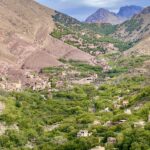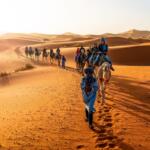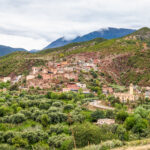Meet the Berbers of Morocco




Berber (Amazigh) Culture in Morocco
A Unique Journey Through History, Mountains, and Desert
When visiting Morocco, many travelers are enchanted by its vibrant cities, colorful souks, and stunning natural landscapes. But beyond the popular imagery lies a rich indigenous culture that predates even the Arab arrival in North Africa, the Berbers, or as they call themselves, the Imazighen (meaning “free people”).
Who Are the Berbers (Imazighen)?
The Berbers are the indigenous people of North Africa, with a history stretching back thousands of years. Their presence spans across the Maghreb, from Morocco and Algeria to Tunisia, Libya, and parts of Mali and Niger, but Morocco remains home to the largest Berber population today. The Berber identity is deeply rooted in language (Tamazight and its dialects), traditions, and a deep connection to the land.
Berber Culture in Morocco
In Morocco, Berber communities can be found throughout the Atlas Mountains, Sahara Desert, and the southwestern coastal regions. They are known for their distinctive architecture, colorful textiles, music, cuisine, and hospitality. Many Berbers still live in traditional villages made of clay or stone, maintaining a semi-nomadic or agricultural lifestyle.
The Moroccan government has recognized the Amazigh language as an official language alongside Arabic, and in recent years there’s been a cultural revival, with more visibility for Amazigh art, education, and festivals.
Where to Experience Berber Culture as a Tourist?
1. The Atlas Mountains: Heart of Amazigh Life
Stretching across Morocco from the Atlantic to the Algerian border, the High Atlas Mountains are home to many Berber villages and communities. Toubkal National Park, near Imlil, is a popular destination for trekkers aiming to summit Mount Toubkal, North Africa’s highest peak.
- What to Do: Trekking, home-stays in Berber villages, exploring local markets, and enjoying traditional Berber mint tea while admiring the scenic mountain views.
- Cultural Tip: Many treks are guided by local Amazigh guides who share stories, legends, and customs from their mountain communities.
2. The Sahara Desert: Berber Nomadic Heritage
The Moroccan Sahara, especially around Merzouga and Zagora, offers a breathtaking desert experience shaped largely by the Berber nomads who have traversed these lands for centuries.
- What to Do: Camel treks, overnight stays in Berber desert camps, music by traditional gnawa and Amazigh musicians around campfires, and sandboarding on the dunes of Erg Chebbi.
- Cultural Tip: Many desert hosts are descendants of Amazigh nomads and are proud to share stories of survival, movement, and tradition in the harsh desert environment.
3. Southwestern Morocco: Agadir, Souss Valley, and the Atlantic Coast
In cities like Agadir, Tiznit, and throughout the Souss-Massa region, Berber culture blends beautifully with coastal and urban life. The surrounding countryside is rich with argan forests, traditional Amazigh villages, and the rugged beauty of the Anti-Atlas mountains.
- What to Do: Visit Amazigh villages near Tafraoute, explore the painted rocks of the Anti-Atlas, surf the Atlantic coast in Taghazout, and shop for silver jewelry in Tiznit.
Cultural Tip: Don’t miss a traditional Amazigh meal, such as tagine or couscous, often flavored with locally sourced saffron, argan oil, and preserved lemon.
Why Berber Culture Enhances Your Moroccan Experience?
Engaging yourself in Berber culture offers a deeper, more authentic connection to Morocco. Whether it’s through a conversation with a mountain guide, sharing bread in a desert tent, or admiring intricate Amazigh tattoos and symbols, visitors gain insight into a resilient people whose traditions continue to thrive alongside modern Moroccan identity.
Travel Respectfully
When visiting Amazigh communities:
- Dress modestly, especially in rural areas.
- Ask before taking photographs.
- Support local artisans and guides.
- Learn a few words of Tamazight — even a small effort is warmly appreciated.
Final Thoughts
Morocco is more than its imperial cities; it’s a mosaic of cultures, landscapes, and people, with the Amazigh at its core. Whether you’re exploring the snow-capped peaks of the Atlas, the golden dunes of the Sahara, or the breezy Atlantic shores, you’ll find the spirit of the Berber people etched into every stone and sung in every melody. It’s a journey not just through places, but through time and tradition.
Help Me Plan My Morocco Trip and engage with Berber people?
- Can’t seem to find what you want?
- Don’t you know what you’d like to do?
- Do you have an idea for a Morocco green trip?
- What is best time to do Marrakeh gardens tour?
- You have unique needs and requirements).









